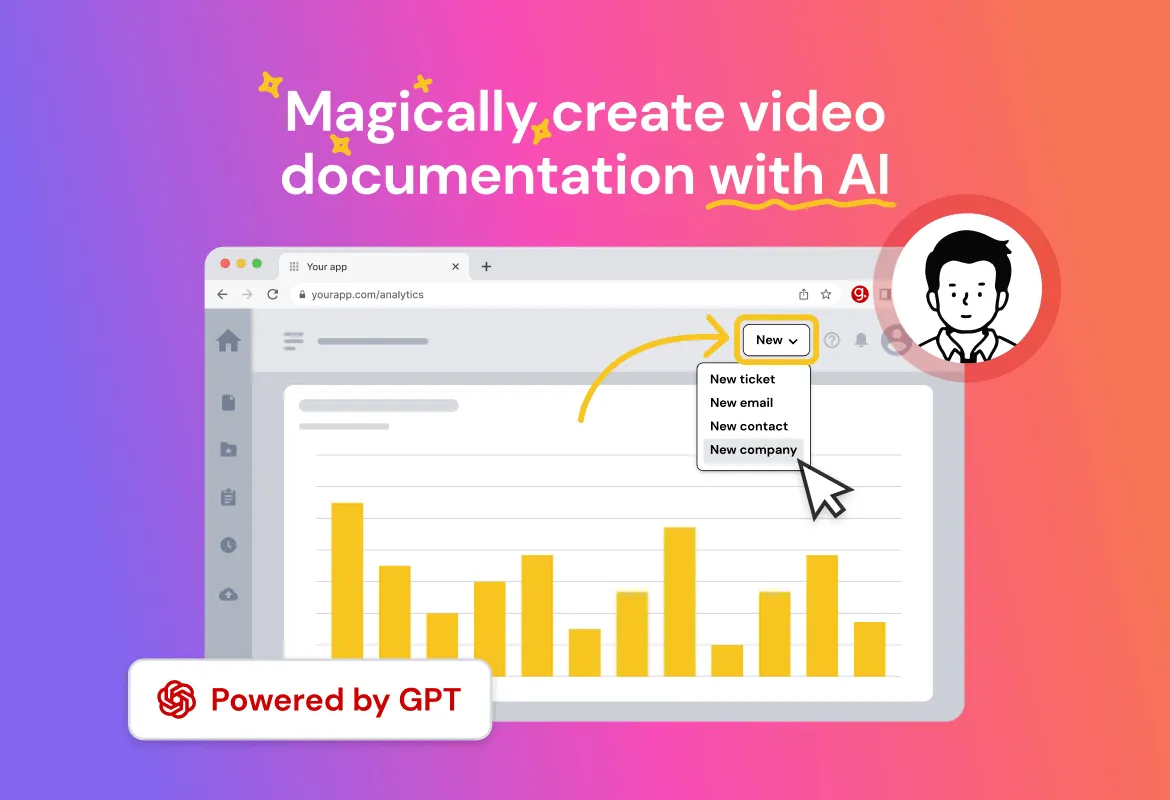8 Best Practices for Instructional Videos: Elevating Education
Learn more about what makes a good instructional video and the best practices for crafting engaging training content.
Published March 21, 2024.

Let's face it—in our constantly connected world, holding someone's attention is tougher than ever. Yet the need to learn new skills and grasp complex topics remains. Instructional videos provide a brilliant solution by immersing learners in visually engaging experiences that foster true understanding.
As these versatile tools become more popular, a key question arises: What separates good instructional videos from ineffective ones? With 98% of those who use video at work saying they enhance the impact of their message, it's evident that instructional content follows proven best practices. Let's explore further!
What are instructional videos?
Instructional videos combine audio and visual components to deliver content across various learning styles. In modern education, they offer engaging learning and development experiences that cater to diverse audiences. These videos enhance comprehension and memory of topics by catering to various learning preferences. They also create a more inclusive environment.
» Learn how to build instructional videos to educate your customers
8 Best Practices for Creating Effective Instructional Video Content
Adopting effective methods for making instructional videos is crucial for maximizing student engagement and learning outcomes. Additionally, well-crafted videos can help build a sense of community and facilitate a more interactive learning experience for your audience. This includes:
1. Keeping Instructional Videos Concise
Having clear and concise content is important for holding their attention and ensuring they understand the information. Focus on the main ideas and keep your videos short to avoid confusion, disengagement, and frustration. Unplanned and unstructured videos can leave your audience feeling uninspired and disinterested.
For example, a poorly scripted lecture without visuals may lose a learner's interest, while concise videos that deliver information efficiently will keep them engaged throughout.
2. Using Visual Engagement
Visual engagement techniques make abstract concepts easier to comprehend and remember. Incorporate diagrams, animations, and illustrations to aid understanding. They not only cater to visual learners but also aid in information retention. For instance, in a chemistry tutorial, molecular animations can visually demonstrate chemical reactions, simplifying complex subjects and enhancing understanding across various topics.
3. Maintaining Engagement
Use storytelling or demonstrations to captivate your audience and keep their attention. You can elevate audience engagement and enhance the viewing experience by adopting a polished and professional appearance. This can be achieved by ensuring high-quality visuals and audio by incorporating professional equipment such as:
- Cameras
- Quality microphones
- Editing software
» Discover the ultimate guide to building an engaging training playlist on your KMS
4. Providing Clear Narration
Scripting and storytelling provide structure and a coherent narrative that make the content engaging and relatable to the audience. Ensure audio is clear, well-paced, and delivered by a speaker who enunciates words.
Scripted videos that use storytelling effectively present complex technical information and intrigue viewers.
5. Encouraging Interactivity
Interactivity is essential for engaging learners and promoting active participation. Platforms like Duolingo exemplify this by integrating interactive exercises with instructional videos. This approach reinforces learning and enhances retention by encouraging learners to engage directly with the content through quizzes, simulations, and prompts.
6. Ensuring Accessibility
Accessibility ensures that instructional content is accessible and engaging to all learners, regardless of disabilities or preferences. Providing captions, transcripts, and audio descriptions makes videos accessible to people with hearing or visual impairments. This guarantees that the widest possible audience can interact with your information effectively.
Platforms like YouTube offer accessibility features to promote inclusive education for everyone. It's important to incorporate them into your videos and utilize platform tools to enhance accessibility.
» Explore these guidelines for creating accessible content for diverse users
7. Using Learner Feedback
Learner feedback is the cornerstone of refining your instructional content. You can analyze feedback data to identify areas for improvement by actively engaging your audience and gathering feedback through:
- Surveys
- Comments
- Performance metrics
8. Enhancing Instructional Videos with Technology
Instructional videos can be effectively enhanced by leveraging emerging technologies like augmented reality (AR), virtual reality (VR), and artificial intelligence (AI). These tools help videos stand out in a landscape where viewers are constantly scrolling through platforms like TikTok and Instagram.
By incorporating AR, VR, and AI, you'll capture audience attention and ensure your content receives the deserved focus. Additionally, embracing AI-powered platforms like guidde, helps you streamline video creation, allowing for swift integration of user feedback.
Note: Imagine automatically generating step-by-step videos based on your screen recordings, allowing you to incorporate feedback swiftly and efficiently. guidde empowers you to focus on crafting exceptional learning experiences while its AI handles the heavy lifting of video creation.
Revolutionizing Learning: The Power of Effective Instructional Videos
It's clear that instructional videos have become powerful educational tools accessible to learners of all ages and backgrounds. By understanding what makes an effective video and implementing proven creation best practices, combined with innovative technologies like guidde, you can easily craft compelling content that elevates the entire learning experience and empowers your audience.


